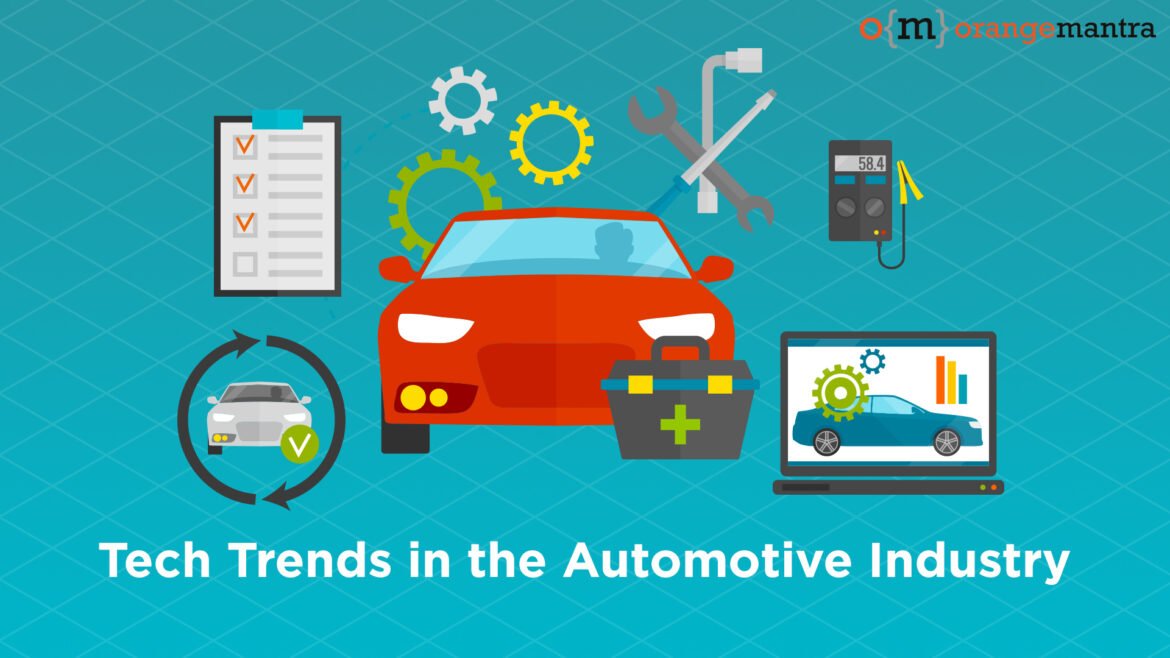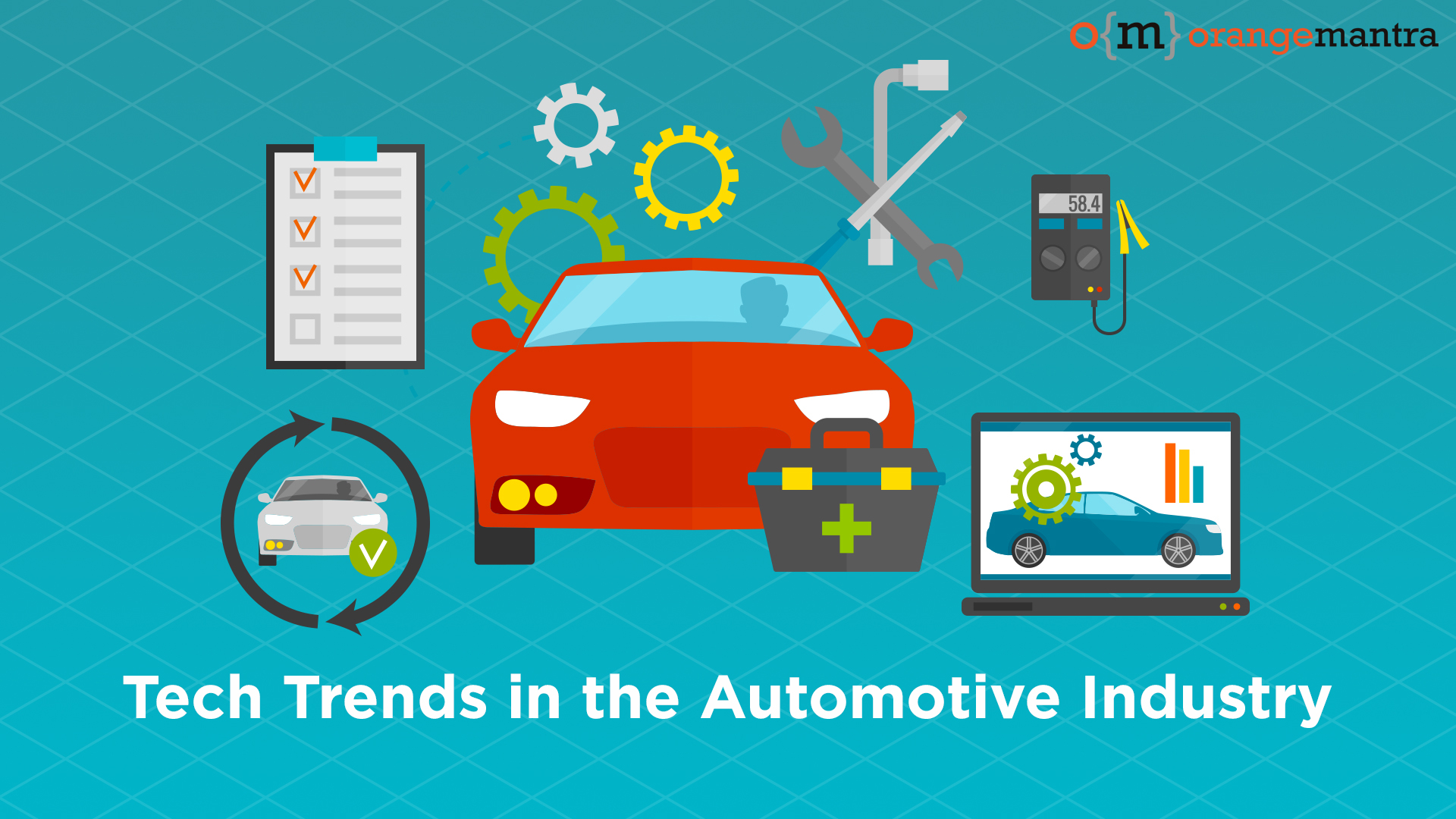
Overview of Emerging Tech Trends in the Automotive Industry
Introduction to the Automotive Industry
The automotive industry has long been a cornerstone of innovation and technological advancement. As vehicles have evolved over the years, they have transformed from basic modes of transportation into sophisticated machines equipped with cutting-edge technology. Today, consumers expect more than just performance—they demand safety, connectivity, and sustainability.
For instance, my first car was a simple sedan that relied entirely on mechanical systems. Fast forward to today, and we see vehicles that incorporate smart technology that not only drives themselves but can also connect to our smartphones!
Evolution of Technology in Automotive Sector
The journey of technological evolution in the automotive sector is indeed fascinating. Here are some key milestones:
- Mechanical to Electronic: Early cars employed basic mechanical systems; now, electronics drive functions ranging from engine performance to infotainment.
- Safety Innovations: The introduction of anti-lock braking systems (ABS) and airbags drastically enhanced passenger safety.
- Fuel Efficiency: Advancements such as hybrid and electric cars are redefining traditional fuel efficiency standards.
Emerging technologies like AI, IoT, and AR are on the horizon, promising even greater advances in this sector. As we navigate this evolving landscape, it’s exciting to anticipate how these innovations will shape the future of mobility.
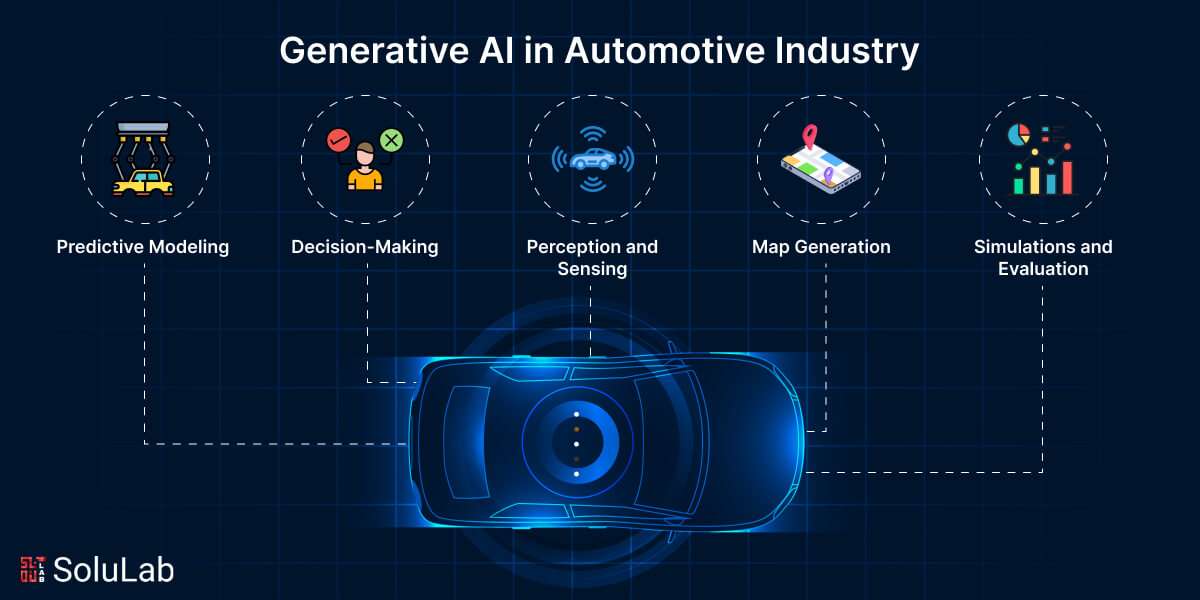
Impact of Artificial Intelligence in Automotive Innovations
Role of AI in Autonomous Vehicles
As we delve deeper into the realm of automotive innovations, one of the most groundbreaking advancements is the role of Artificial Intelligence (AI) in autonomous vehicles. Imagine commuting without having to touch the steering wheel. With AI-powered systems, this is becoming a reality!
- Perception Systems: These systems enable vehicles to understand their surroundings using cameras, LIDAR, and radar technology.
- Decision-Making Algorithms: AI helps in making real-time decisions, allowing vehicles to navigate safely through complex environments.
For example, during a recent road trip, I encountered a self-driving car on the highway, smoothly changing lanes and reacting to traffic conditions like a pro. It was fascinating to witness the potential that AI holds in transforming our travel experiences.
AI Applications in Enhancing Vehicle Safety
AI isn’t just about driving; it’s significantly enhancing vehicle safety, too. Here are some impactful applications:
- Predictive Maintenance: AI analyzes data from various sensors to detect potential failures before they occur, ensuring vehicles are in optimal condition.
- Automatic Emergency Braking: This technology can identify imminent collisions and apply brakes autonomously, potentially saving lives.
With personal stories like witnessing a near-miss prevented by a friend’s car equipped with AI-driven safety technology, it reinforces how these advancements can lead to safer roads for everyone. The integration of AI in the automotive sector is truly exciting, paving the way for not only smarter vehicles but also safer journeys.
Advancements in Electric Vehicles and Sustainable Technology
Growth of Electric Vehicle Market
Continuing the journey through technological advancements, we arrive at one of the most exciting trends in the automotive industry: electric vehicles (EVs). The growth of the electric vehicle market has been nothing short of phenomenal in recent years. Picture this: only a few years ago, seeing an electric car on the road felt unique, but now, they’re becoming a common sight!
- Market Expansion: Major automotive manufacturers are ramping up production, with over 400 new EV models expected to be released in the next few years.
- Sales Surge: In 2021 alone, electric vehicle sales jumped by an astounding 80%.
For instance, a friend of mine recently made the switch to an electric SUV and is thrilled about the savings on fuel and maintenance. It’s heartening to witness how this trend is reshaping not just personal choices but also the industry landscape.
Sustainable Practices in Automotive Manufacturing
As electric vehicles gain traction, sustainable practices in automotive manufacturing have also become paramount. Here’s how companies are stepping up:
- Eco-Friendly Materials: Manufacturers are exploring biodegradable plastics and recycled materials to construct car interiors.
- Energy-Efficient Production: Many are implementing solar power and wind energy solutions, drastically reducing their carbon footprints.
A visit to a local manufacturer revealed just how committed they are to sustainability, using energy-efficient machinery and reusing water in their factories. These advancements not only contribute to a healthier planet but also signal an exciting future for the automotive industry. Transitioning to electric and sustainable practices is a major step toward a cleaner, more responsible future on the roads.
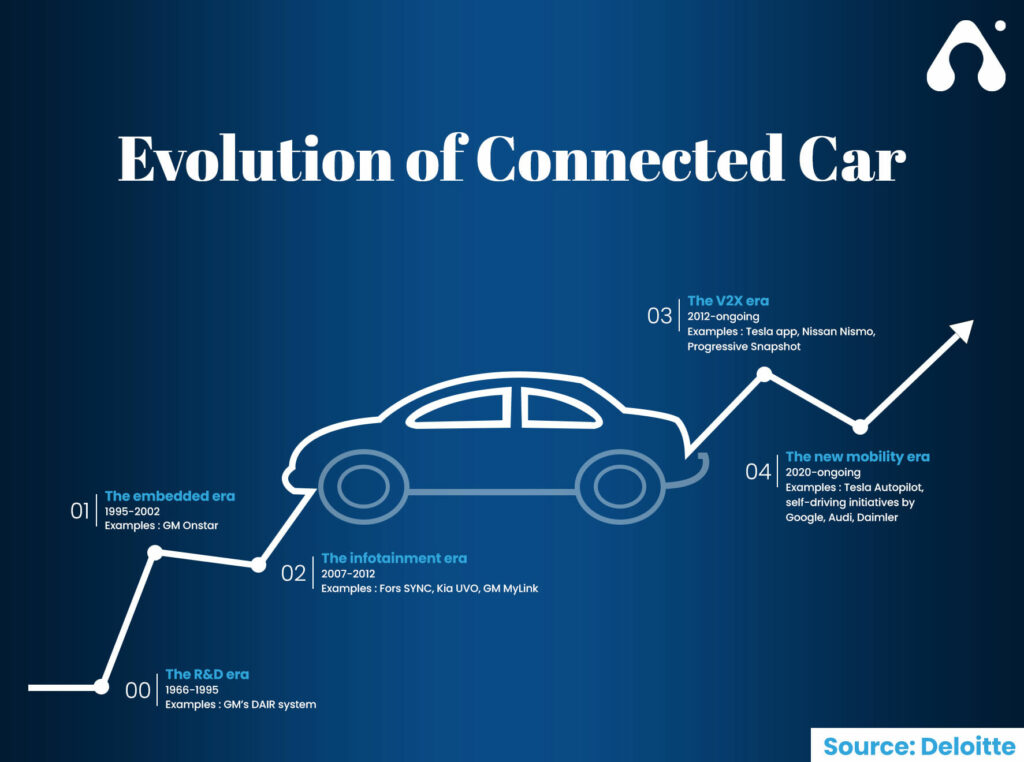
Internet of Things (IoT) in Connected Vehicles
IoT Integration in Smart Cars
As we seamlessly continue our exploration of automotive advancements, the Internet of Things (IoT) has emerged as a game-changer for connected vehicles. Imagine your car acting as your personal assistant, monitoring your driving habits while connecting with your home and other smart devices. That’s the power of IoT integration in smart cars!
- Real-Time Data Communication: Vehicles equipped with IoT sensors can communicate with each other to share data about traffic conditions, road hazards, and even parking availability.
- Remote Control Features: Many modern cars allow owners to control various functions—like pre-conditioning the climate or checking battery status—through mobile apps.
A good friend of mine recently opted for a smart car to significantly enhance their daily commute. It intelligently rerouted them away from congested areas, showcasing the profound benefits IoT offers.
Benefits of Connectivity in Automotive Industry
The connectivity provided by IoT is paving the way for numerous benefits in the automotive industry:
- Enhanced Safety: Connected vehicles are better equipped to predict potential accidents and provide drivers with timely alerts.
- Improved Maintenance: By gathering diagnostic data, manufacturers can predict and address issues before they escalate, reducing downtime.
During a recent repair, my mechanic explained how IoT technology can now help pre-order parts based on the vehicle’s needs—it’s impressive! Embracing IoT not only makes driving more enjoyable but also fosters a safer and more efficient automotive ecosystem. The future of connected vehicles is indeed bright, transforming how we think about transportation.
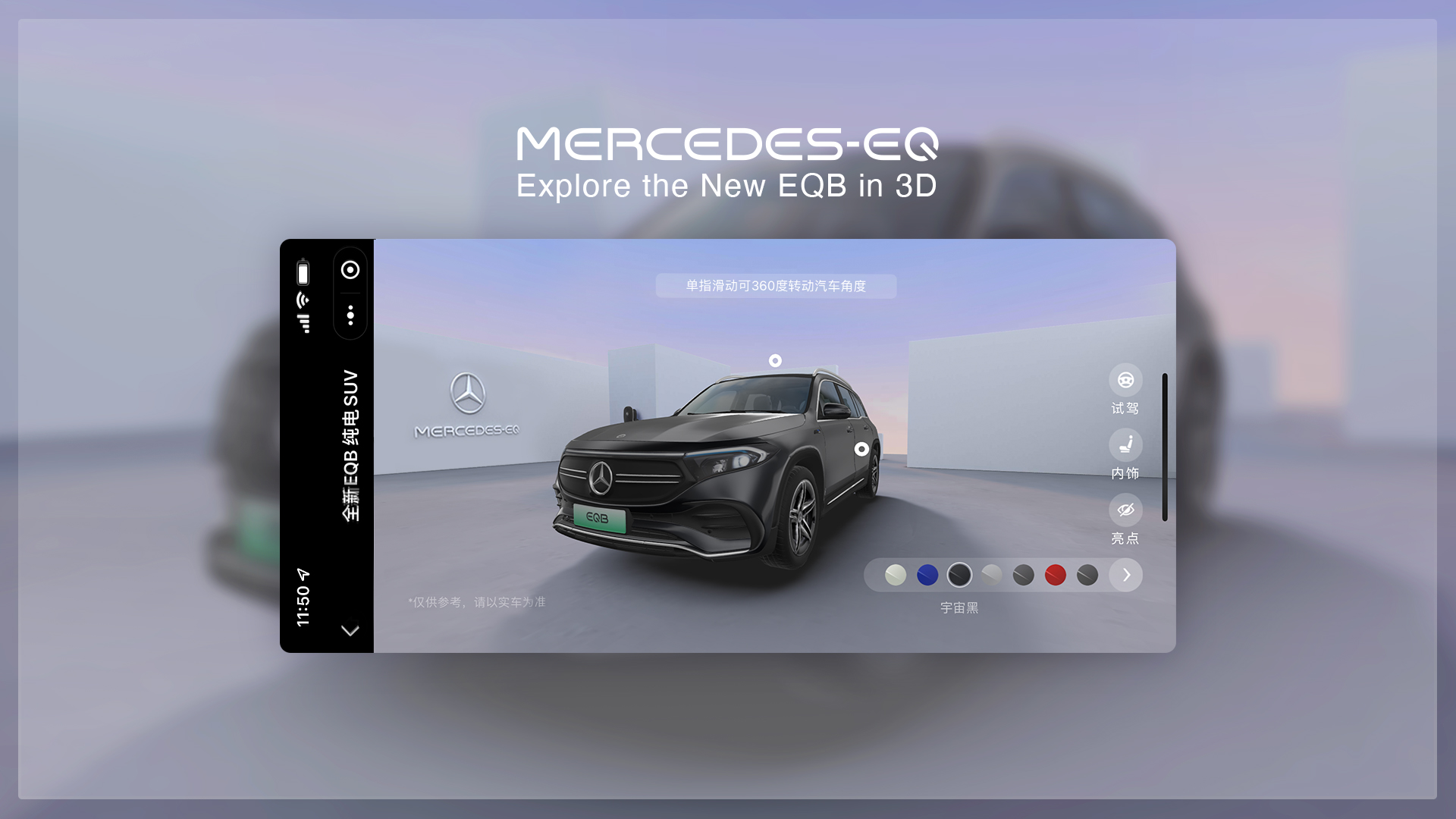
Augmented Reality (AR) and Virtual Reality (VR) in Car Design and Customer Experience
AR/VR Applications in Vehicle Prototyping
As we transition into the dynamic realms of Augmented Reality (AR) and Virtual Reality (VR), it’s fascinating to see how these technologies are revolutionizing car design and prototyping. Imagine a designer being able to visualize a car in a 3D space without building a physical model. That’s the magic of AR and VR!
- Rapid Prototyping: Designers can create virtual prototypes that allow for quick iterations without the cost of traditional methods.
- Collaborative Environments: Teams can work together in virtual spaces, making modifications and enhancements in real-time regardless of location.
I once attended a VR demo where engineers showcased a new vehicle design. Seeing them manipulate the model with just their hands in a virtual space was mind-blowing!
Enhancing Customer Engagement through AR/VR
Not only is AR/VR changing how cars are designed, but it’s also enhancing customer engagement dramatically. Here’s how:
- Interactive Showrooms: Customers can experience vehicles in a virtual environment, exploring features and customizations without any pressure.
- Test Drives in VR: Some dealerships now offer VR test drives, giving prospects a feel for the vehicle without the need for a physical ride.
My cousin recently visited a dealership that utilized VR for test drives, and he raved about it. He could explore a car’s features while getting a realistic feel for the driving experience. AR and VR are undeniably redefining how consumers connect with automotive brands, creating a more immersive and exciting customer journey. Embracing these technologies is not just a trend; it’s the future of automotive engagement.
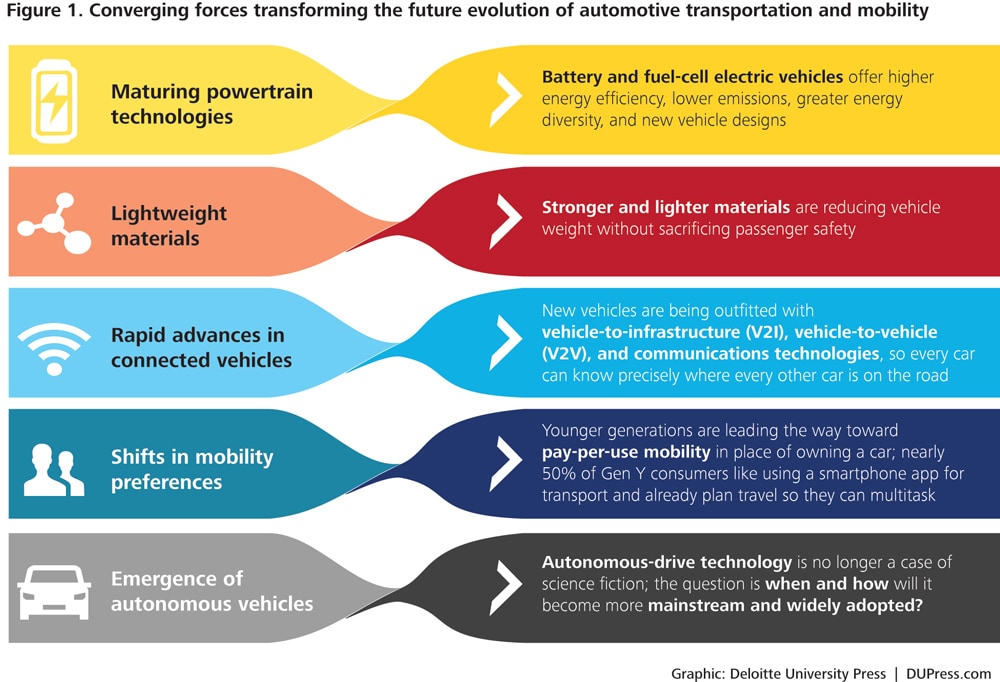
Future of Mobility: Trends in Ride-sharing and Autonomous Mobility Services
Rise of Ride-sharing Platforms
As we continue our exploration of the automotive industry, one of the most notable trends shaping the future of mobility is the rise of ride-sharing platforms. Just a few years ago, hailing a cab meant standing on the sidewalk and waving one down. Now, with the touch of a button on an app, rides are at our doorstep!
- Convenience and Affordability: Thanks to platforms like Uber and Lyft, users can enjoy on-demand access to rides without the responsibility of owning a vehicle.
- Shared Resources: This shift not only reduces the number of cars on the road but also promotes a more sustainable way of urban commuting.
A recent trip with friends showed me just how ingrained ride-sharing has become in our lifestyles, as we easily coordinated rides without the hassle of parking.
Autonomous Mobility Solutions for Urban Transport
In addition to ride-sharing, autonomous mobility solutions are significantly impacting urban transport. As self-driving technology advances, the urban landscape is evolving. Here’s what’s happening:
- Shared Autonomous Vehicles (SAVs): These vehicles promise to provide the same convenience of ride-sharing while eliminating the need for a human driver.
- Reduced Traffic Congestion: By integrating these systems into city infrastructures, municipalities can reduce traffic and increase efficiency.
During a recent conference, I learned about cities planning to implement dedicated lanes for autonomous vehicles, making commutes smoother. The synergy of ride-sharing and autonomous technologies illustrates a future where mobility is not only safer but also more sustainable. Together, they pave the way for a transformative approach to the way we navigate our cities, fostering a new era of transportation.

Challenges and Opportunities in Implementing Emerging Tech in Automotive Industry
Regulatory Hurdles in Adopting New Technologies
As the automotive industry embraces innovative technologies, challenges abound, particularly in navigating the regulatory landscape. These hurdles can often be daunting, slowing down the implementation of promising advancements.
- Safety Standards: Ensuring that new technologies, like autonomous vehicles, meet stringent safety regulations can be a lengthy process. Companies often find themselves adapting features to meet evolving legal requirements.
- Data Privacy: With the integration of IoT and AI in vehicles, the need for robust data protection laws becomes critical, adding another layer of complexity.
I recently chatting with a startup founder who shared how their groundbreaking autonomous system was delayed due to lengthy regulatory approvals. It’s clear that as these technologies advance, so too must our regulations, requiring collaboration between industry leaders and lawmakers.
Business Opportunities in Automotive Tech Innovations
Despite these challenges, the landscape is ripe with business opportunities. The integration of innovative tech in the automotive sector presents exciting avenues for growth and development:
- New Market Segments: With the rise of EVs and ride-sharing, new consumer segments are emerging, creating endless possibilities for tailored products and services.
- Partnerships for Progress: Collaborations between tech companies and automotive manufacturers are fostering innovation, as seen with several tech giants investing in automotive startups.
A friend of mine recently launched a tech-based company focused on EV charging solutions, showcasing how entrepreneurs can capitalize on the industry’s shift toward sustainability. The challenges posed by regulatory hurdles can be navigated, and with creativity and foresight, the future of the automotive landscape promises a wealth of opportunity for those willing to adapt and innovate. The intersection of technology and automotive is a space where challenges can lead to new beginnings.
